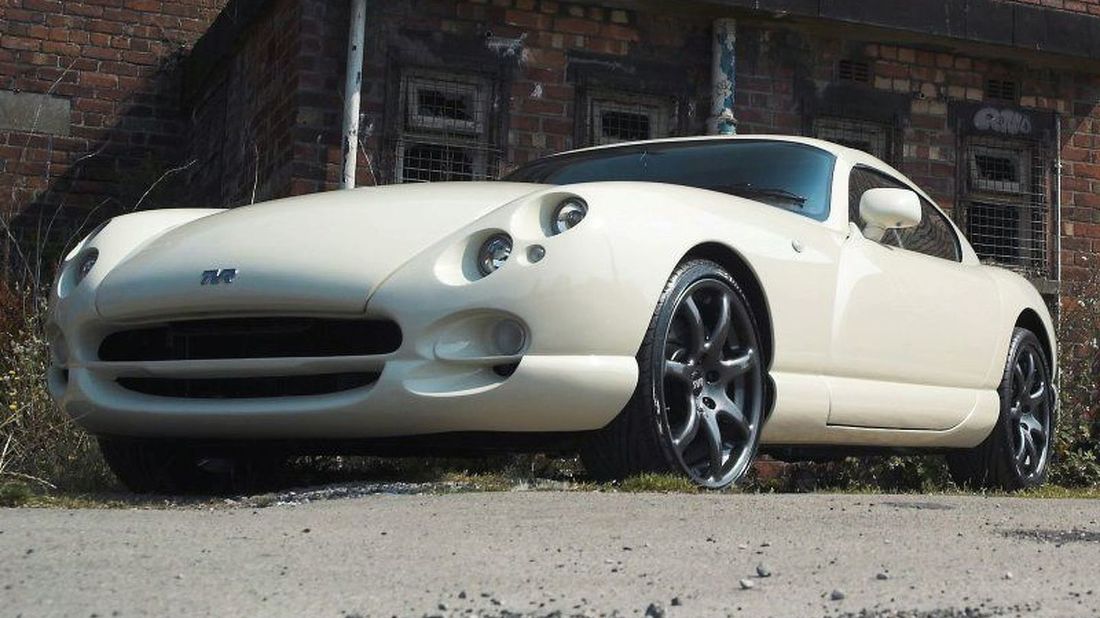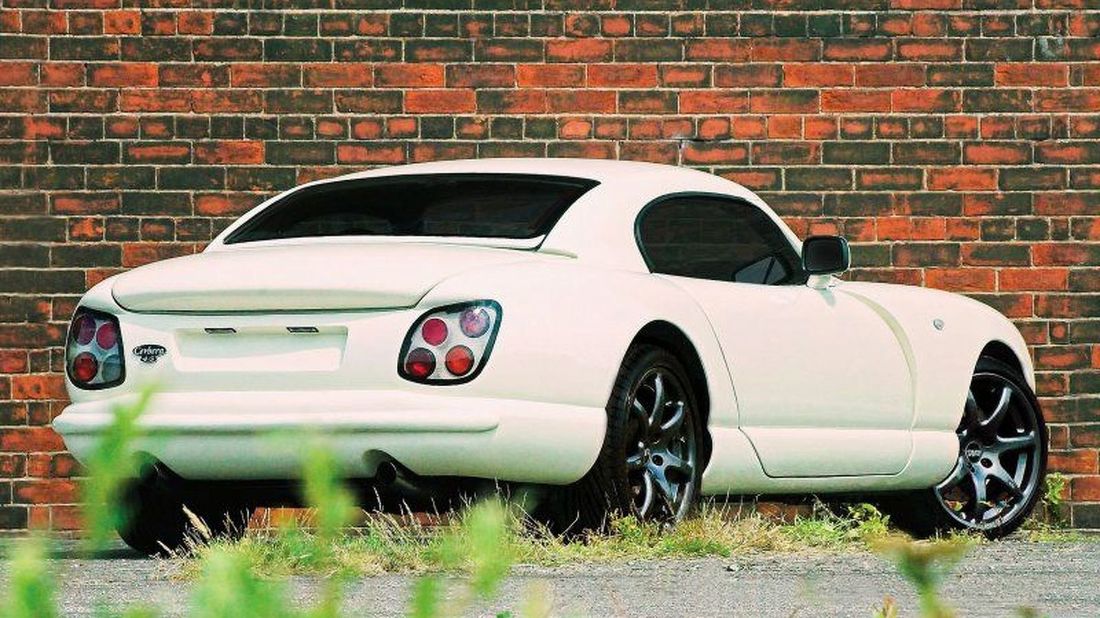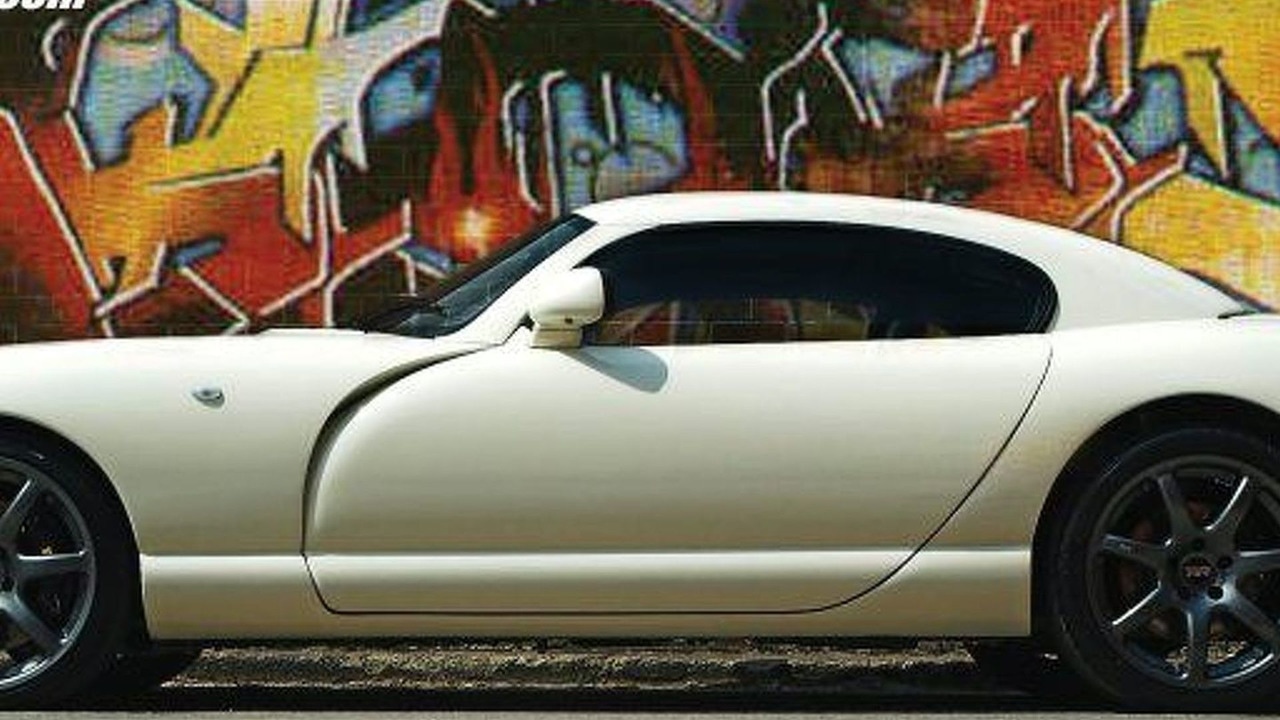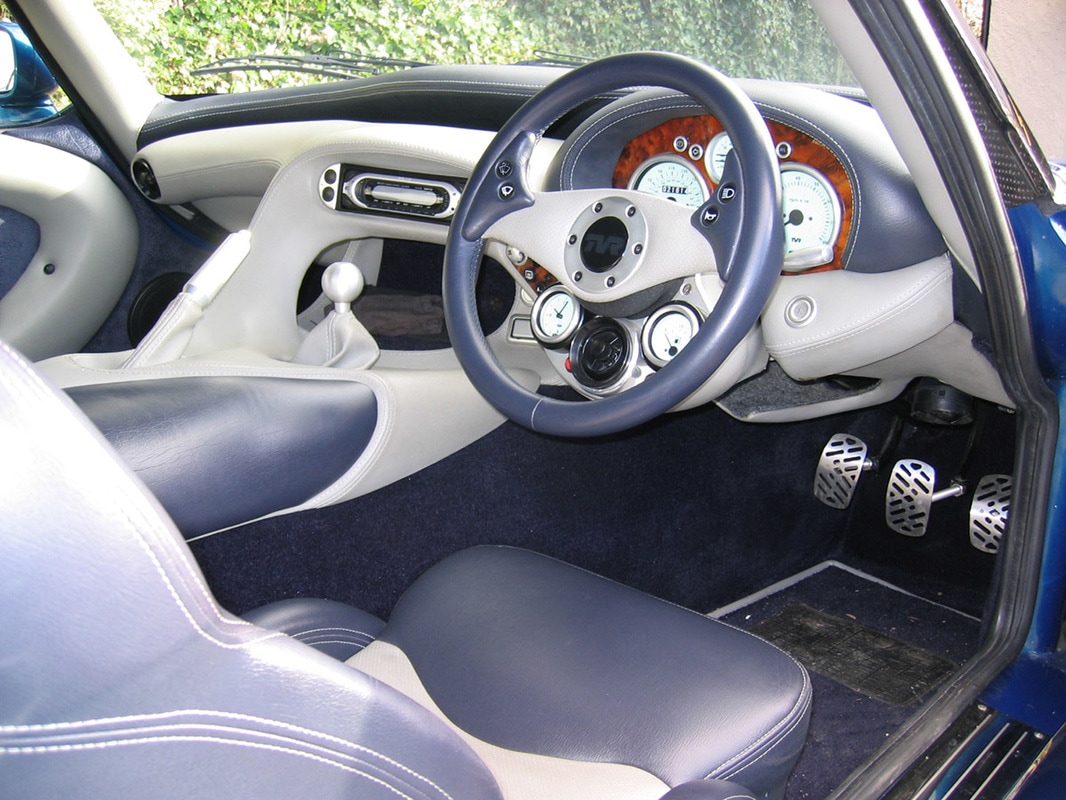Tvr Cerbera Pictures
History1993 - The TVR Cerbera began life in the early summer as a styling exercise by TVR's team of designers, who were very quickly given the go-ahead to start building full-scale models. They sculpted the car out of full-size blocks of foam rather than being constrained by the two dimensions of a paper sketch or the dehumanising aspects of design by computer. A handsome Grand Tourer began to take shape and it was easy to see that the car would be a winner so a running prototype was prepared for the 1993 London Motor Show. Unencumbered by endless committees, TVR was able to complete the prototype in record time and the Cerbera was unveiled at the show. It was greeted with tremendous acclaim. The name is derived from Cerberus the three-headed beast of Greek legend that guarded the entrance of Hades. 1994 - Orders flooded in, a further 276 of them at the 1994 Birmingham Motor Show alone. Subsequently, almost every aspect of the car was improved. Originally, the Cerbera was designed to be powered by the TVR Power Rover based engines but it was decided that TVR's own engine, the Speed Eight, would be a more suitable power plant. The Cerbera was the first roadgoing TVR to feature the Speed Eight engine. This engine is quite remarkable in design in that it owed more to the trends at the time in racing engines than to anything that had ever been seen before in a road car. In other words, instead of basing a race engine on an existing road engine, TVR developed an engine for the Cerbera out of a race engine. The result is that the Speed Eight has many features in it which would be more commonly found on an F1 engine of the time. Examples of these are its extremely sophisticated water circulation system, its lubrication system which delivers oil at high pressure to the engine and at low pressure to the crankshaft and a block so rigid that it can be used as a stressed member. An all alloy engine with its eight cylinders arranged in a 75 degree Vee, the Speed Eight engine has more torque in its various specifications than any other normally aspirated petrol engine of equivalent size and weight. At 121 kg, the engine is indeed lighter than the V8 F1 and F3000 engines with which it shares so many features. Many Speed Eight engine components are of extremely high quality such as the pistons and connecting rods, which are forged, and the camshafts, which are rifle-bored and are made of solid billet EN40B steel. The net result was that the Speed Eight performed extremely well in the most gruelling test known to engineers: when forty of them where given to TVR Tuscan racing drivers to try to blow up every weekend in the Race series. Although sharing styling cues with the Chimaera, the Cerbera is a completely new car with new brakes, chassis, suspension and a different construction method. Introduced in response to overwhelming customer demand for a 2+2, the Cerbera has seen TVR return to a market sector that it has not inhabited since 1985. With the Cerbera's interior, TVR discarded conventional thinking and created a dashboard binnacle in which all the instruments are right in front of the driver. The clock and the fuel gauge, visible through the steering wheel, and a fresh air vent are situated under the steering column and are adjustable for reach and rake with it. Mounted on the steering wheel are controls for the main beam, windscreen washers and wipers as well as the horn. The Cerbera is more than a normal 2+2 in that, in terms of the configuration of its seating arrangement, it would be better described as a 3+1. The front passenger seat is able to slide forward further than normal, thereby freeing a substantial amount of extra legroom for the passenger sitting directly behind. Attention has been paid to the ease of access to the rear seats which in too many 2+2s is unnecessarily difficult. Therefore, the Cerbera's doors are long enough to make getting into the back seats much easier. Cerbera is pronounced Sir - burr - uh and is derived from the mythological beast, Cerberus, who was the brother of the Chimaera. In addition, in Italian, una cerbera is a frightening, fierce woman. The Cerbera actually comes with three different engines. The Cerbera Speed Six was the first car to be fitted with TVR's own straight six and has softer suspension and higher profile tyres to give a more comfortable ride and less road noise in line with its grand touring design. Very much in the tradition of British sports cars of the sixties but with modern abilities, the Cerbera Speed Six is a coupe with a very British, very sporting nature. Towards the end of production the Cerbera 4.2 remained available for those customers who preferred a V8 and the Cerbera 4.5 gave a range topping 420 bhp and 380 ft.lbs. of torque. Getting to 60 mph in 3.9 seconds, 100 in 8.1 and 150 in 17.9, the Cerbera 4.5 was one of the fastest road cars in existence. With larger brakes, modified suspension and larger wheels and tyres, the Cerbera 4.5 offered the handling and braking to match its performance, stopping from 100 mph in only 3.8 seconds. The 4.5 Cerbera also includes a Hydratrak speed sensitive differential as standard. 2000 - For the 2000 model year, lights, A pillars, roofline and seats were changed and lightweight bonnet, doors and bootlid were introduced on the Cerbera 4.5. | Technical Specifications Cerbera 4.2 Cerbera Speed Six Cerbera 4.5 Dimensions: The last TVR Cerbera The Last Cerbera 2006 - TVR held an online auction for what it billed as "The Last Cerbera". TVR's owner and chairman at that time, Nikolai Smolenski brought the design out of retirement for one more unit as an homage to the "beautiful but brutish bygone British sports car." The "last Cerbera" was a 4.5 LW right-hand drive car in Pepper white with Prussian blue leather interior trim. The auction failed to meet its reserve price but TVR still decided to sell the car to the high bidder. The final bid was under £45,000 to which 5% plus 17.5% VAT would be added making it approx £55,500. InteriorTVR outdid themselves even by their own standards with the Cerbera Interior. With dials, an air vent and separate stop and start buttons below the steering wheel plus radically sloping dashboard it is a unique place to be. TVR Cerbera 4.5 interior 1998 |
2002 - the headlight housings were faired into the wings for even smoother lines at the same time as the suspension being upgraded. All TVR Cerberas now had a new suspension set-up, the most notable parts of the which were gas-filled dampers which TVR developed in conjunction with HBE to incorporate a highly unusual damper curve. By ramping up the rebound very quickly at higher piston speeds, traction and ride could be improved at the same time as high-speed body control. Cerbera prices, however, remained unchanged at £41,100 for the 4.2 and Speed Six and £46,500 for the 4.5.
It was also now possible for customers to have a red rose conversion for any TVR Cerbera 4.5. It gave 440 bhp at 7250 rpm and 390 ft.lbs. at 5500 rpm (up from 420 bhp at 6750 rpm and 380 ft.lbs at 5500 rpm). With reshaped inlet and exhaust ports to increase the flow of gases and a higher compression ratio giving about 50% of the improvement, the rest is only available when using 97 octane super unleaded petrol. The red rose conversion has a dashboard mounted switch to control which fuelling and ignition map is used to enable the engine to take advantage of the higher octane fuel while avoiding detonation when using the more easily available lower octane fuel.
Along the way, a number of off shoot models appeared, although mainly aimed at the racing or supercar market.
The Speed 12 made an impact on the GT racing scene around year 2000 before rule changes restricted it's entry, while a stunning road legal Cerbera Speed 12 was with drawn almost as soon as it made the press reviews once Peter Wheeler realised the 900 or so bhp was perhaps a little to extreme for the road.
2003 -A Cerbera Speed 12 entered private ownership.
Source: https://www.tvr-car-club.co.uk/tvr-cerbera.html





Komentar :
Posting Komentar